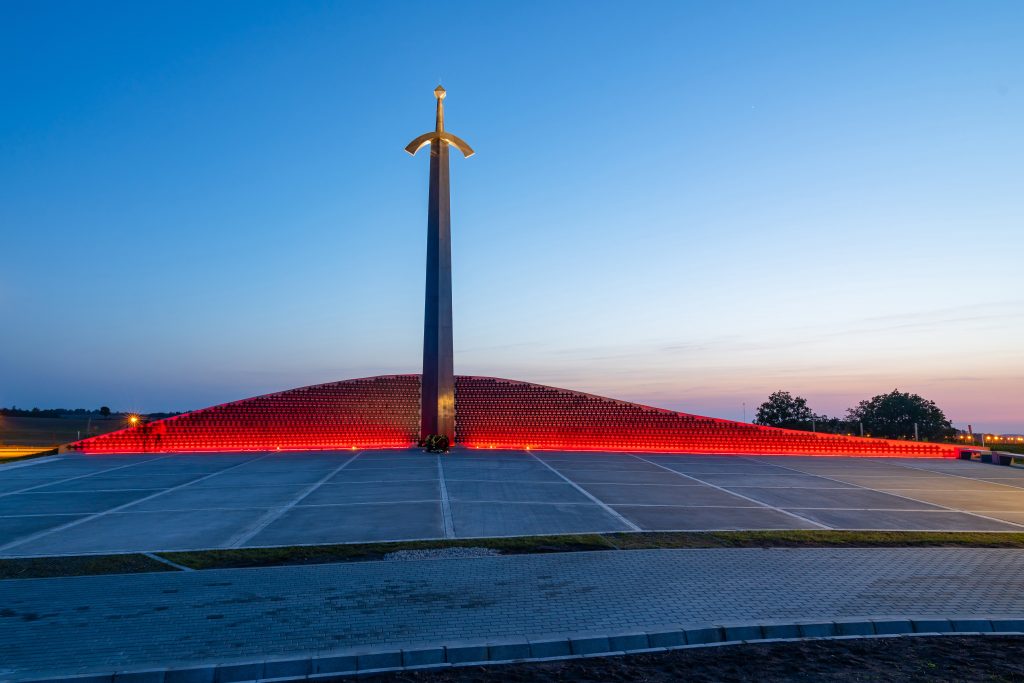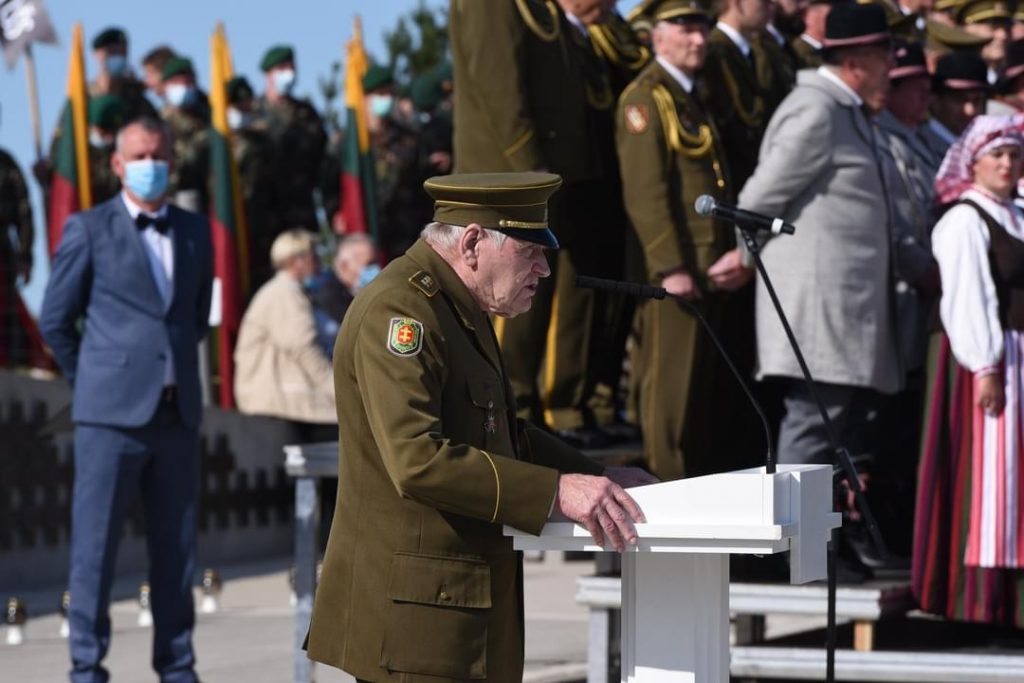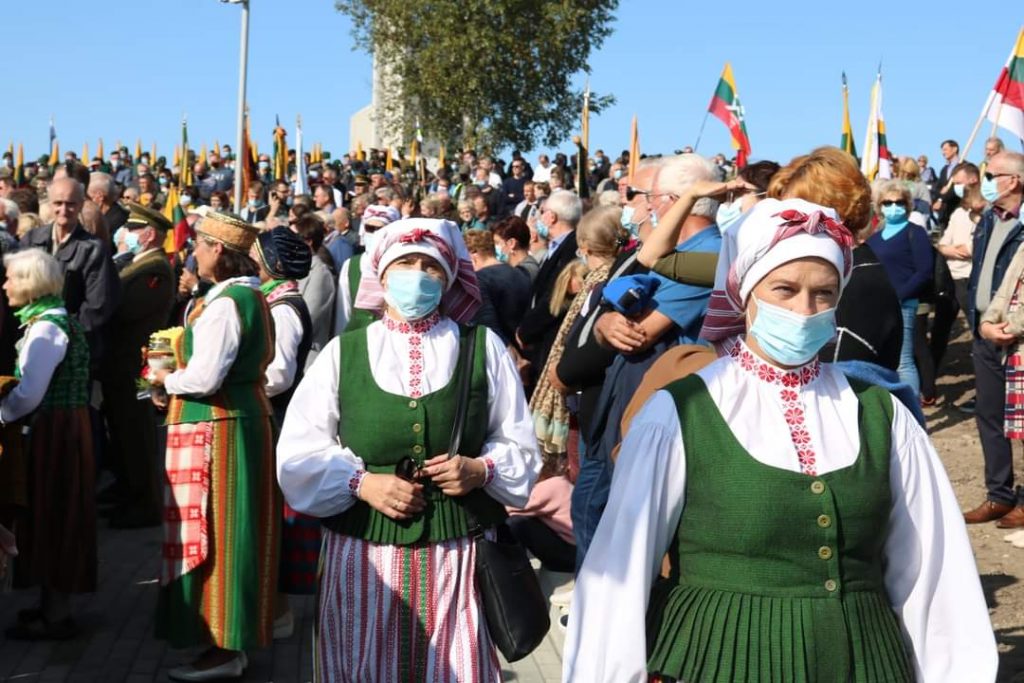About memorial
The idea behind this memorial is to commemorate all 20 000 partisans who have sacrificed their lives for their country’s freedom in an unequal fight against the Soviet occupants in the post-war period.
LEARN MORE ABOUT MEMORIALThe idea behind this memorial is to commemorate all 20 000 partisans who have sacrificed their lives for their country’s freedom in an unequal fight against the Soviet occupants in the post-war period.
LEARN MORE ABOUT MEMORIALIn 1944 when the USSR occupied Lithuania for the second time, tens of thousands of Lithuanian patriots gathered to fight the invaders. Between 1944-45 more than 30 thousand armed men had gathered in the woods.
LEARN MORE ABOUT FREEDOM STRUGGLEWe ask relatives of partisans to send us their surnames and other information. This information will be processed and later used in the memorial. We would be very grateful.
CONTACT USHave your grandparents, parents or you come across partisans? If so, can you recall any interesting stories you would be willing to share with everyone? Perhaps you can even recall a romance-worthy love story?
SHARE YOUR MEMORIESPlease see how the memorial is going to look at the photo gallery. Also please send us photos of partisans that you may have from archives or personal files.
SEE GALLERYYou can donate now by transfer or bank card, PayPal or text message. Press here to find out how.
MAKE A DONATION
On September 20, 2020 Lithuania, was unveiled in Kryžkalnis partisan memorial. KRYŽKALNIS MEMORIAL was consecrated by the cardinal, Kaunas Archbishop Emeritus Sigitas Tamkevičius. The event was attended by the Republic of Lithuania President Gitanas Nausėda, Ministers of the Republic of Lithuania, Members of the Seimas, Raseiniai municipal leaders, authors of the partisan memorial, Lithuanian Freedoms leaders of the combat movement and other civil society organizations members, surviving partisans, Lithuanian soldiers, shooters, etc.













At the request of the visitors of our website www.partizanumemorialas.lt we provide insights from scientists and ethologists about the meaning of the Memorial Obelisk for the Lithuanian Partisans – the Lithuanian sword being embedded, and the unique traditions of honouring the Aistian (ancient Lithuanian) warriors – the graves being marked with vertically embedded arms: axes, spears and swords.
Archeologists DR. VYTAUTAS KAZAKEVIČIUS and DR. ARVYDAS MALONAITIS
We present the summary of the article by the researchers and archaeologists Dr. A. Malonaitis and Dr. V. Kazakevičius on the significance of guns vertically thrust into graves and cenotaphs:
‘Vertically thrust weapons: axes, spears and swords are associated with magic. It was thought that stabbing weapons were the most powerful, combining the two magical properties – metal and sharpness. When stabbing, their magical function is greatly enhanced as it pierces an enemy or an evil spirit.
The sword, vertically thrust onto the mound, has several more meanings: it marks a symbolic burial ground for the soldiers, honours those soldiers and commanders who showed extraordinary courage, and protects spirits of the dead. It is likely that a thrust weapon represents a soldier who has died or gone missing abroad.’
Thus, vertically mounted weapons were used to mark the symbolic burials of soldiers, to honour their memory and to protect their spirits from evil.
(see attached)
Vertically stuck swords in the Lithuanian Iron Age monuments’ <—- link
Ethnologist, administrator or ‘Alkas’ website JONAS VAIŠKŪNAS
(see attached)
Professor, ethnologist LIBERTAS KLIMKA
‘A sword stuck into a hill is as if protecting of the Motherland. By the way, it reminds also the Cross… The sword is stuck after the victorious battle into the sacred soil of Motherland, to clean the abominable designs of the enemy!’
Read More